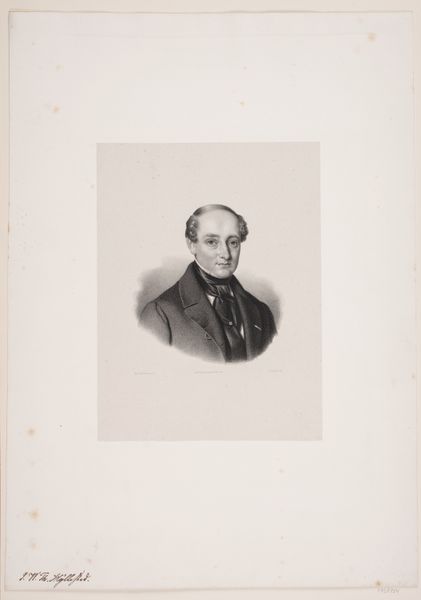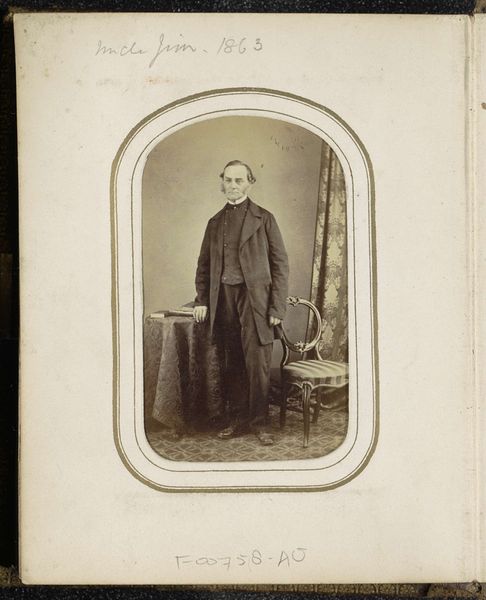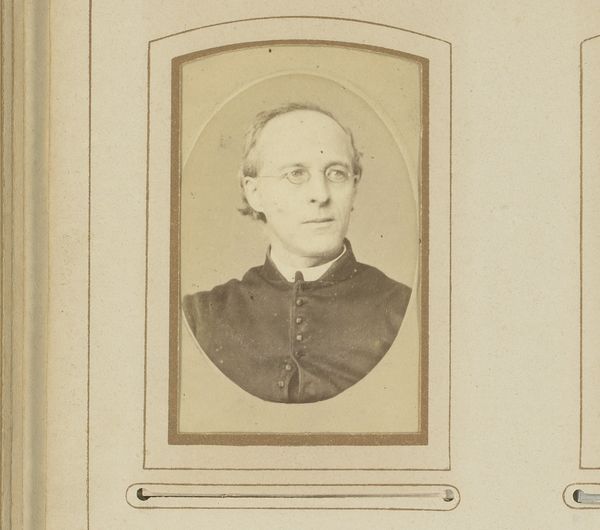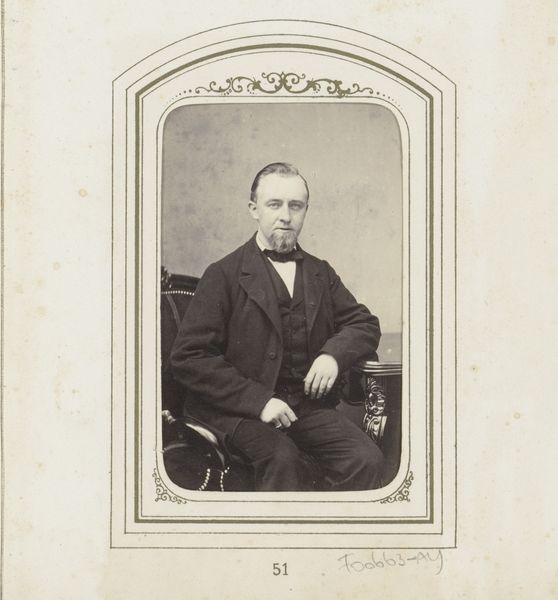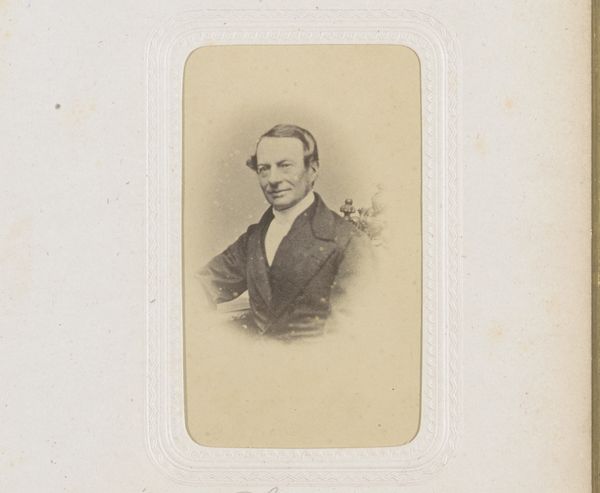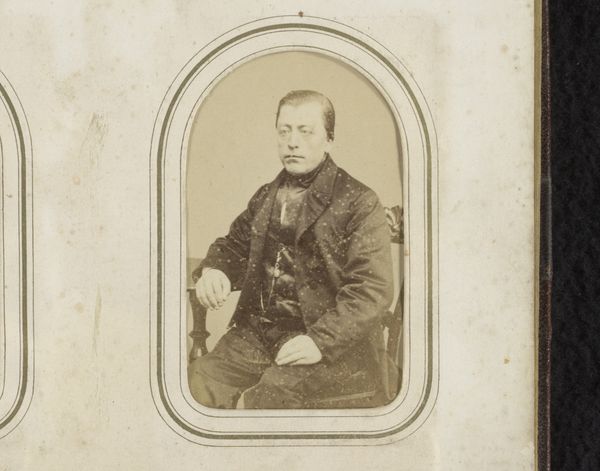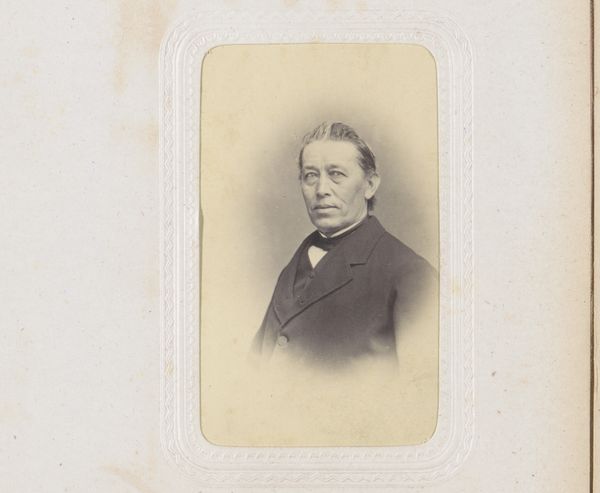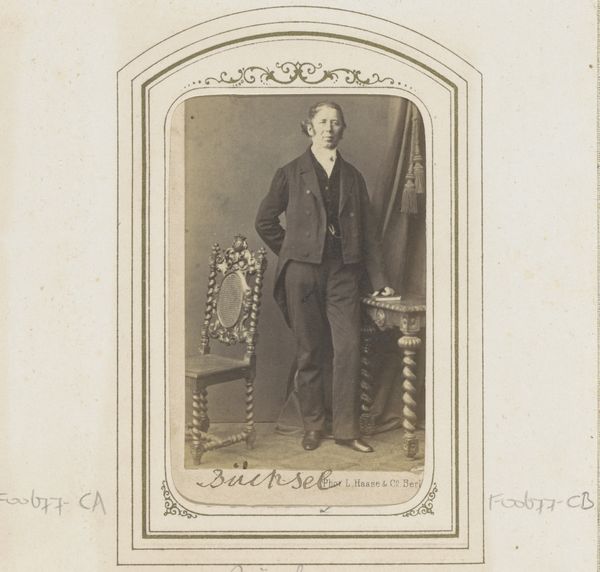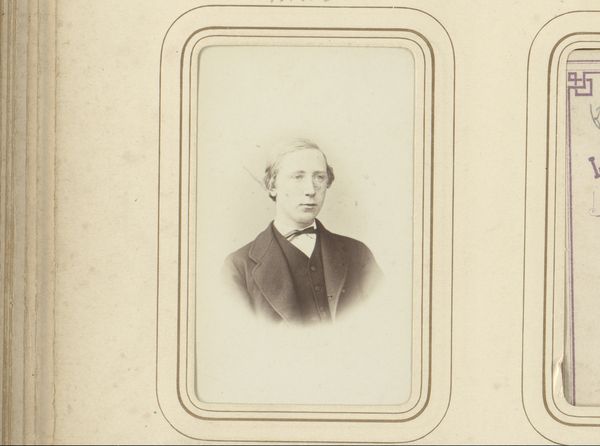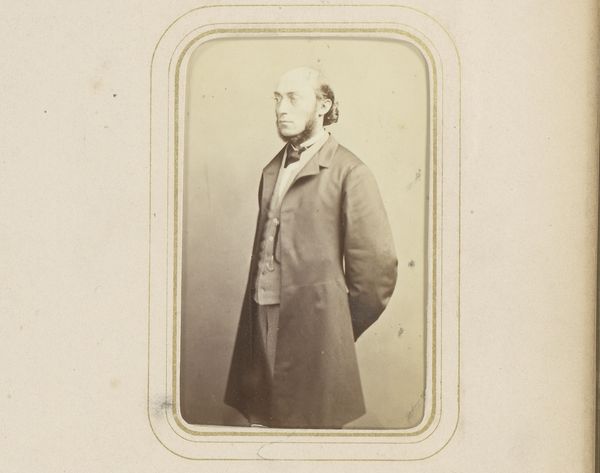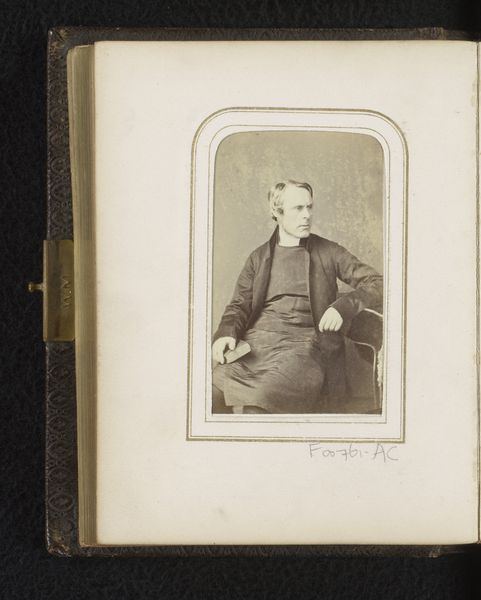
Fotoreproductie van een getekend portret van Johan Rudolf Thorbecke 1850 - 1900
0:00
0:00
daguerreotype, photography
#
portrait
#
daguerreotype
#
photography
#
historical photography
#
19th century
#
genre-painting
Dimensions: height 85 mm, width 53 mm
Copyright: Rijks Museum: Open Domain
Curator: Here we have a reproduction of a drawn portrait presented as a photograph from between 1850 and 1900, identified as Johan Rudolf Thorbecke. It is thought to be a daguerreotype. Editor: The photograph evokes a somber, almost severe atmosphere. The palette is constrained to monochrome, drawing focus to the subject’s stern visage and formal attire. There is a haunting timelessness, especially within its aged presentation. Curator: Precisely. Observe the formal arrangement: Thorbecke is presented in a three-quarter view, carefully positioned within an ornate frame. His clothing and the slight upward angle assert his status, subtly underscoring a message of authority. The play of light across the surfaces creates delicate tonal variations, emphasizing texture and depth, particularly in his dark suit. Editor: Considering Thorbecke's role as a significant liberal reformer and statesman in 19th-century Netherlands, this image embodies the paradox of representation. While photography was democratizing portraiture, this image, through its composition and the subject's demeanor, reinforces an elite identity. It seems deliberately constructed to convey power and intellectual rigor in a rapidly changing social landscape. How did this portrait contribute to crafting Thorbecke’s public image during an era of burgeoning nationalism and calls for greater political representation? Curator: Well, consider the aesthetic context. Photography in this period still bore the heavy influence of painted portraiture, emulating its compositional and stylistic conventions. The high contrast and sharp focus contribute to the picture’s formality, mirroring the structured social norms of the era. The portrait offers a narrative within its limited visual vocabulary; each detail seems meticulously chosen to communicate status and gravitas. Editor: Indeed. The photographic reproduction hints at the democratizing influence of photography while simultaneously solidifying the subject's stature within the social and political hierarchy. This object becomes an artifact embodying tensions of class and power in the Netherlands during the mid to late 19th century. What this portrait reveals is less about Thorbecke himself and more about the careful curation of public persona in a changing world. Curator: The framing is interesting because it draws one's eye back and forth between subject and construction—I find the portrait to be successful both as document and as symbolic expression of form and technique. Editor: And there we have a perfect example of its cultural capital, if I do say so myself.
Comments
No comments
Be the first to comment and join the conversation on the ultimate creative platform.
